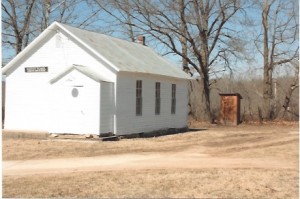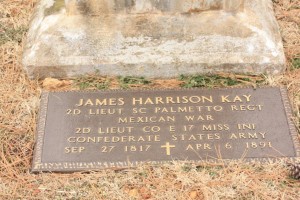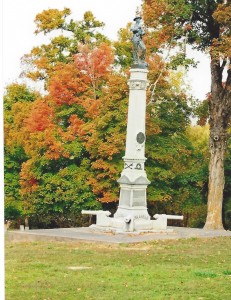When we first decided to maintain a blog on all things wondrous in the Ozarks, we had a vague sense of what we wanted to convey. But over the course of the last two months, our goal has come into sharper focus.
Do you Imagine in Color, Do you See the Whole Picture?
When you think of the early settlers and pioneers in the United States, how do you visualize the people, places and events?

Schoolhouse in Benton County, Arkansas, established “in 1868 or before” – just a few years after Benton County resident Lt. James Harrison Kay’s Mississippi regiment fought the bloody Battle of Chickamauga — a desperate struggle for control of the Chattanooga.
This may sound like a strange question, but a few years ago I realized that when I thought about the early days of our country’s existence, I imagined events and places in black and white, totally devoid of color. I also viewed people of that era as severe, harsh, hardened, and not much like me at all.
It dawned on me that I likely did this because early photographs were in black and white — also, photographers back in the day discouraged their subjects from smiling, as the picture would likely be more blurry and distorted — they had to be absolutely still in order for a photograph to “turn out.” The point? Those early settlers laughed and smiled as much as we did; they also saw the same vibrant colors of redbuds across the landscape in early spring and the fiery flourescence of maple, oak and Bradford pear leaves ushering in the fall.
Lynn mentioned that when she thought about the past, she saw it in fits and starts, not as a cohesive whole — at best, the whole was not only a mere sum of its parts, the whole wasn’t even considered.
I think most people are like Lynn and I; when we began discussing this, the proverbial dawn came. What if we gave, not just a rendition of this or that person’s life, or this or that particular event, but a sketch of what was happening over the course of a few years in various parts of the Ozarks among contemporaries who may or may not have been aware of each other’s existences?
Embracing the Whole
For example, while Anthony Houston, who was born in 1792 was making a life for himself in Benton County Arkansas, what was fellow resident James Harrison Kay, a veteran of both the Mexican War and the Civil War, experiencing? How about Archibald Yell, the second governor of Arkansas who was felled by the Mexican War?
We were concerned by the fact that some pictures we will show are of gravestones — but realized that those stones gave us a starting point for where to look to uncover the greatest hidden treasures in the Ozarks — we will focus not on the dates of someone’s birth and death, but on the dash between those years — the stuff that made up their lives and contribute to our own lives decades and centuries later — even if we have been largely unaware of it. From there, we have discovered little known historic sites that bring have helped us piece together the everyday lives of extraordinary, early Arkansans.
We hope you enjoy reading what we’ve put together as much as we’ve enjoyed our journey of discovery.



Good stuff!
Thanks for reading, and especially for the feedback!
Thanks so much, Rhonda
Enjoyed this article. Thank you for Sharing.
Thankyou, Jean!